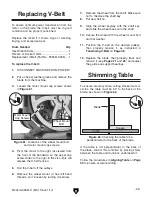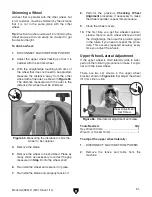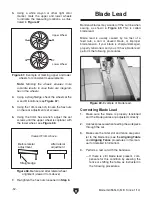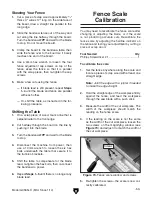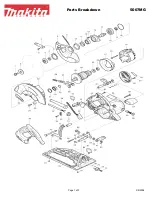
-38-
Model G0555LX
(Mfd. Since 1/14)
The most common causes of blade breakage
are:
•
Faulty alignment/adjustment of the guides.
•
Forcing/twisting a wide blade around a short
radius.
•
Feeding the workpiece too fast.
•
Dull teeth or damaged tooth set.
•
Over-tensioned blade.
•
Upper blade guide assembly set too high
above the workpiece.
•
Using a blade with a lumpy or improperly fin-
ished braze or weld.
•
Continuously running the bandsaw when not
in use.
•
Leaving blade tensioned when not in use.
•
Using the wrong TPI for the workpiece thick-
ness. (The general rule of thumb is three
teeth in the workpiece at all times.)
3. Adjust the upper blade guide assembly all
the way up, and move the blade guides com-
pletely away from the blade.
4. Remove the fence and miter gauge from the
table, then remove the table insert and table
pin (see
Figure 49).
To change blade:
1. DISCONNECT MACHINE FROM POWER!
2. Move the blade tension quick release lever to
the left to release blade tension.
Changing Blade
Disconnect bandsaw from
power BEFORE changing
blade. Serious personal
injury could occur if
machine is started during
this procedure.
LACERATION HAZARD!
Bandsaw blades are sharp
and difficult to handle.
Wear heavy leather gloves
while handling to reduce
the risk of being cut.
5. Open the upper and lower wheel covers.
Figure 49. Table insert and table pin.
Table Insert
Table Pin
6. Put on heavy leather gloves.
7. Slip the blade off the wheels, rotate it 90°,
and slide it through the table slot and off the
machine.
Figure 50. Changing the blade.
Summary of Contents for G0555LX
Page 68: ......


























